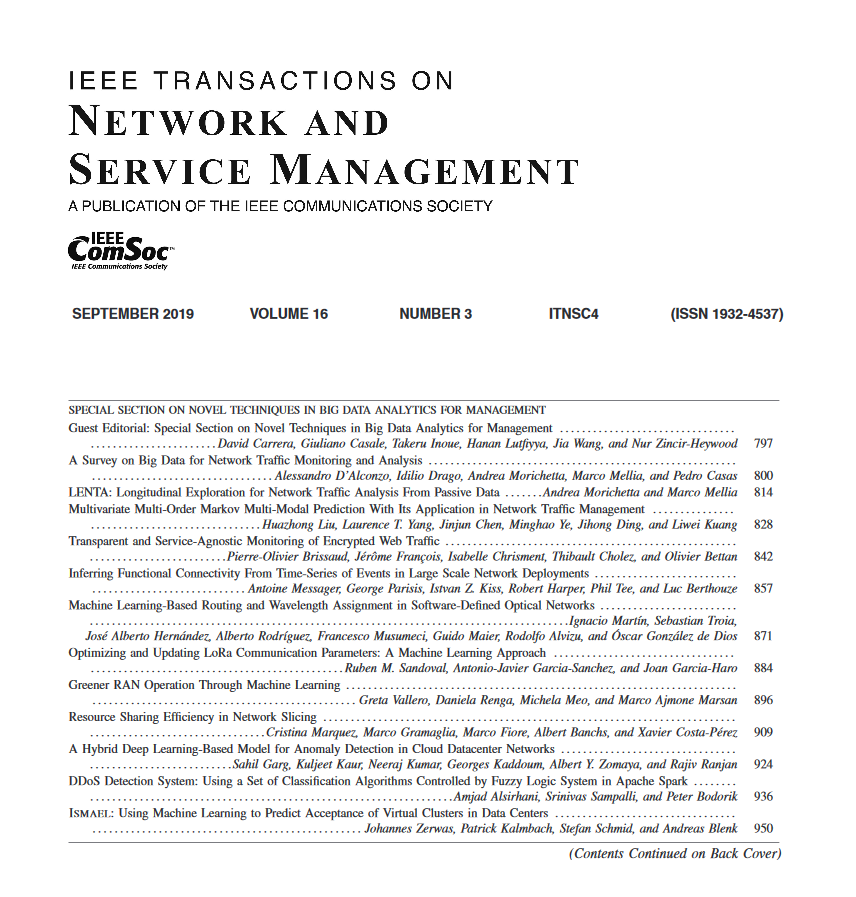基于多智能体强化学习的协同无人机光无线通信
IF 5.4
2区 计算机科学
Q1 COMPUTER SCIENCE, INFORMATION SYSTEMS
IEEE Transactions on Network and Service Management
Pub Date : 2025-02-18
DOI:10.1109/TNSM.2025.3543160
引用次数: 0
摘要
在海上物联网(IoT)系统中,利用一群无人驾驶飞行器(uav)和光通信可以实现各种潜在的海上任务。然而,由于光束的高方向性和海洋环境的干扰,通过无人机作为中继的光链路容易中断。为了解决这一挑战,我们提出了一种联合链路优化方案(JLOS),该方案包括抗风干扰(WDR)和自适应波束宽度调整(ABA)。在WDR中,我们首先将问题建模为部分可观察马尔可夫决策过程(POMDP),然后设计了一种协同多智能体强化学习(MARL)方法来控制多风条件下的无人机群,以保持机械稳定性并防止链路中断。此外,在ABA中,为了减少控制活动和阳光、雾等环境因素的不确定性,我们设计了一种基于分布式MARL的自适应算法。基于无人机历史位置和链路误码率调整波束宽度,提高通信可靠性。数值仿真验证了该方法在增强数据鲁棒性传输方面的有效性。本文章由计算机程序翻译,如有差异,请以英文原文为准。
JLOS: A Cooperative UAV-Based Optical Wireless Communication With Multi-Agent Reinforcement Learning
In maritime Internet of Things (IoT) systems, leveraging a swarm of Uncrewed Aerial Vehicles (UAVs) and optical communication can achieve a variety of potential maritime missions. However, due to the high directionality of the optical beam and interference from the marine environment, the optical link via UAVs as relays is prone to interruption. To address this challenge, we propose a Joint Link Optimization Scheme (JLOS) that includes Wind Disturbance Resistance (WDR) and Adaptive Beamwidth Adjustment (ABA). In WDR, we first model the problem as a Partially Observed Markov Decision Process (POMDP), and then design a collaborative Multi-Agent Reinforcement Learning (MARL) approach to control a swarm of UAVs in windy conditions, to maintain mechanical stability and prevent link interruption. Furthermore, in ABA, to reduce uncertainties from control activities and environmental factors like sunlight and fog, we design an adaptive algorithm using distributed MARL. It adjusts beamwidth based on historical UAV locations and link Bit Error Ratio (BER) to improve communication reliability. Numerical simulations confirm its effectiveness in enhancing robust data transmission.
求助全文
通过发布文献求助,成功后即可免费获取论文全文。
去求助
来源期刊

IEEE Transactions on Network and Service Management
Computer Science-Computer Networks and Communications
CiteScore
9.30
自引率
15.10%
发文量
325
期刊介绍:
IEEE Transactions on Network and Service Management will publish (online only) peerreviewed archival quality papers that advance the state-of-the-art and practical applications of network and service management. Theoretical research contributions (presenting new concepts and techniques) and applied contributions (reporting on experiences and experiments with actual systems) will be encouraged. These transactions will focus on the key technical issues related to: Management Models, Architectures and Frameworks; Service Provisioning, Reliability and Quality Assurance; Management Functions; Enabling Technologies; Information and Communication Models; Policies; Applications and Case Studies; Emerging Technologies and Standards.
 求助内容:
求助内容: 应助结果提醒方式:
应助结果提醒方式:


